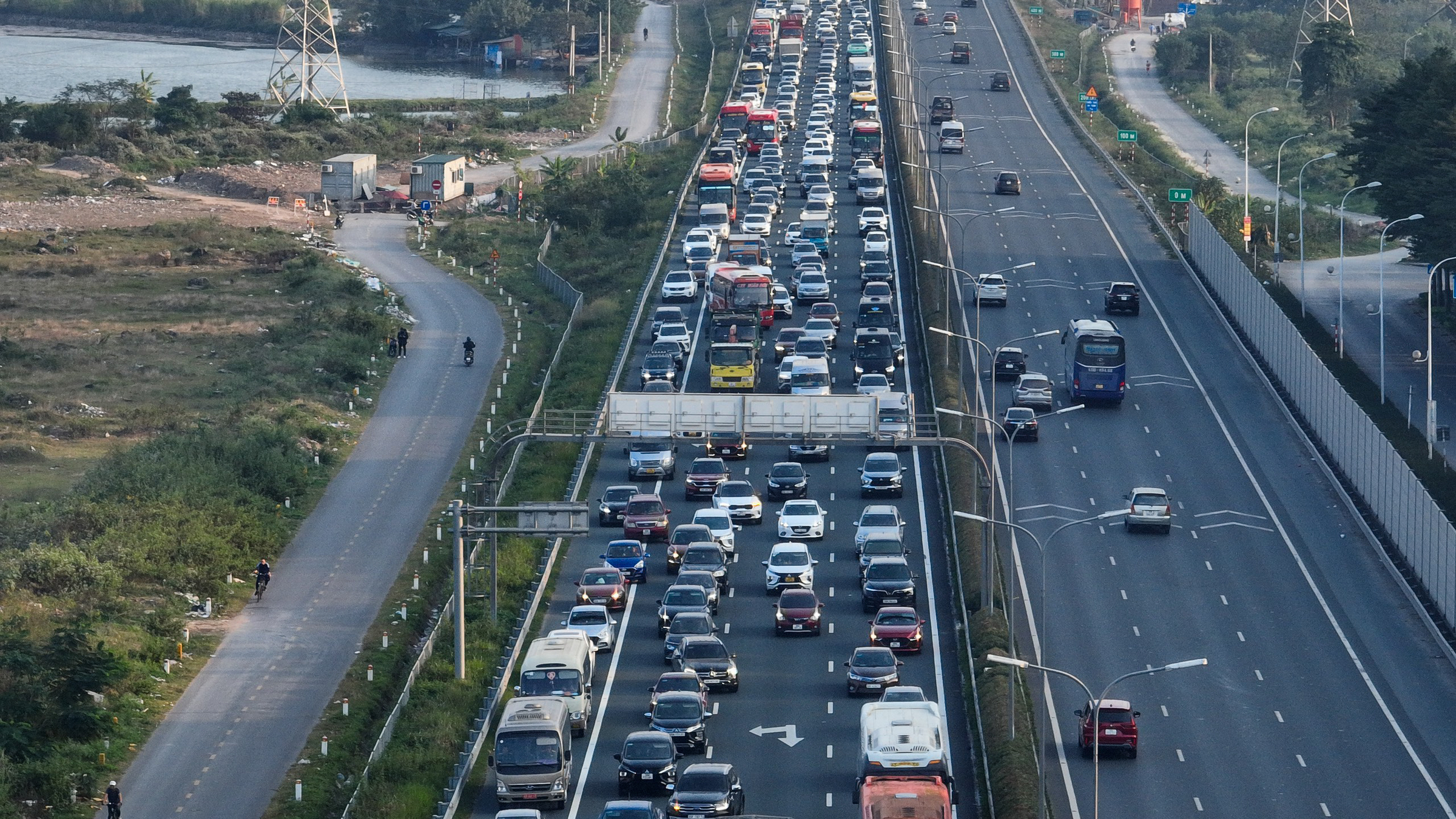Following a multi-vehicle accident on 15/9 involving a water truck and three other vehicles on the Cau Gie - Ninh Binh highway that injured 8 people, the Traffic Police Department (Ministry of Public Security) proposed removing trees from highway medians and using only anti-glare netting.
Many highways currently have trees planted in their medians, including Phap Van - Cau Gie - Ninh Binh, Noi Bai - Lao Cai, Thang Long Boulevard, Hanoi - Bac Giang, Hanoi - Thai Nguyen, and TP HCM - Long Thanh. These are all 4- to 6-lane highways with emergency lanes.
Associate Professor Vu Hoai Nam (Hanoi University of Civil Engineering) argues that median trees offer several advantages. They provide directional guidance for vehicles in addition to road signs, block headlights from oncoming traffic, and improve driver visibility at night.
Furthermore, these trees reduce dust from opposing lanes, enhance the landscape, contribute to a greener environment, and create a more relaxing driving experience. However, they can sometimes obstruct visibility at intersections and entrances/exits if they become overgrown. Soil erosion around the trees can also affect traffic flow. Additionally, maintenance, planting, pruning, and watering incur costs for the managing entity.
 |
Traffic on the Phap Van - Cau Gie highway. Photo: Ngoc Thanh |
Nam considers the water truck accident regrettable but insufficient to justify labeling the vehicle a traffic hazard. He believes that proper tree maintenance and drivers adhering to safe following distances and maintaining good visibility can prevent such accidents.
"While the Traffic Police Department's proposal aims to protect lives, it requires careful consideration. Planting trees offers many benefits, and combining this with other safety measures would be more effective than complete removal," Nam said.
Nguyen Van Quyen, President of the Vietnam Automobile Transportation Association, agrees that there isn't enough evidence to warrant removing median trees. Previous discussions within the transportation sector acknowledged the benefits of trees, such as landscaping, glare reduction, shade, and air purification. The consensus was that trees should be planted on highways with sufficiently wide road surfaces, according to standards.
"Removing trees requires scientific research and assessment based on practical situations, not just a reaction to a single accident," Quyen said. He added that proper pruning and watering procedures can mitigate risks, and if an accident occurs despite these measures, it's likely due to driver error, such as lack of observation or speeding.
Traffic expert Nguyen Van Thanh points out that removing trees from highways with wide road surfaces and medians would waste land and investment. Many countries maintain trees in their highway medians for aesthetic purposes.
"We shouldn't overreact to a few accidents by removing all trees. Authorities should determine the root cause – whether it's the fault of the watering truck or other vehicles – to find appropriate solutions," Thanh said.
As an immediate solution, Nam suggests investing in automatic watering systems to reduce reliance on water trucks. He also recommends keeping trees at intersections and turning points lower than eye level for better visibility.
Thanh proposes avoiding watering during peak hours and using escort vehicles with mobile warnings behind water trucks, in addition to existing measures like warning lights and horns. Maintenance crews should also place warning signs at least 150-200 m ahead of maintenance vehicles (depending on the speed limit).
On 16/9, the Vietnam Road Administration requested Road Management Zone 1 and the Vietnam Expressway Development Investment Corporation (VEC), which manages the Cau Gie - Ninh Binh highway, to inspect and review the road signs and infrastructure where the accident occurred.
Doan Loan












